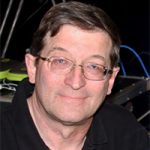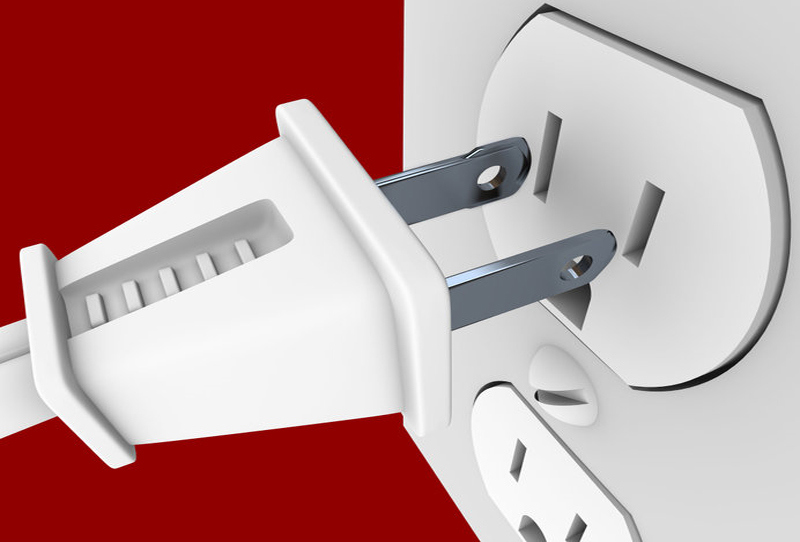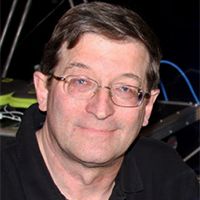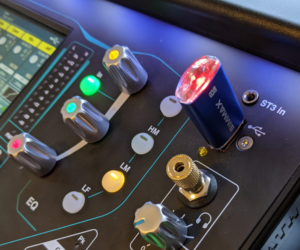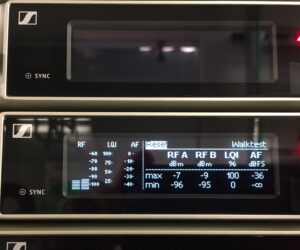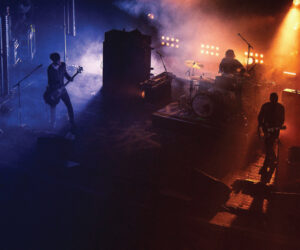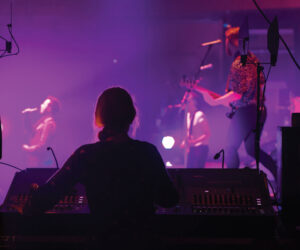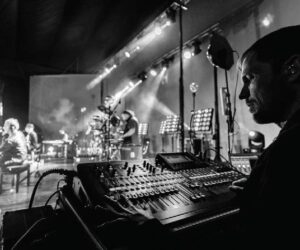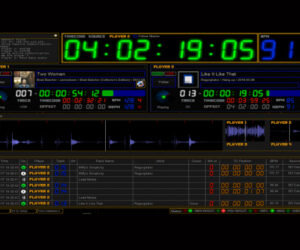Listen To/Download The Audio Version Of This Article:
Editor’s Note: This is part 2 of a multi-part series — access the other installments here.
In my previous article in this series, I noted that the sound systems and stage amplifiers of the 1970s and 80s were a power-hungry bunch. But developments such as modern class-D amplifiers and Tube Amp modeling have changed things for the better. Just how much better? Glad you asked…
The first step in any experiment is to figure out what we need to measure and set up a series of tests to gather empirical data. My hypothesis stated that you could power a small to medium-size cover band and their sound system from battery and solar power alone. So, what exactly do we need to measure?
For this exercise, we’re only going to consider using a Lithium battery-powered pure sine wave inverter such as the Jackery Explorer series. There are many other manufacturers of these so-called “solar generators” available, all of which include a 12-volt DC “cigarette lighter” outlet as well as 120-volt AC outlets. I have both the Jackery Explorer 1500 (Figure 1) that’s designed to provide 1,500 watt-hours (1.5 kWh) of battery storage with an 1,800-watt pure sine inverter that provides 110 volts AC, as well as an Explorer 300 offering 300 watt-hours (0.3 kWh) of battery storage with a 300-watt pure sine inverter that provides 110 volts AC.

Why Pure Sine Wave?
Up until recently, most inverters (which convert 12-volts DC from a battery into 120-volts AC to power appliances) produced modified sine wave (MSW) waveforms. In an MSW inverter there are rather large voltage steps trying to approximate the 60 Hz sine wave of residential power in the U.S.
Further, that MSW waveform has a lot of harmonic distortion, up to 40 percent or so that can translate into excessive heating of sensitive electronics (such as computer power supplies) as well as a noisy buzz in amplifiers and stage instruments. Yup, an MSW inverter can make PA loudspeakers sound like an aged neon sign in a bar. As a result, don’t employ an MSW inverter to power stage gear or a sound system.
However, we’re in luck because modern inverters are now available in pure sine wave (PSW) versions with less than 2 percent harmonic distortion (Figure 2). This is actually a lot cleaner than much of the power coming out of the electrical outlets in the average home or on a stage. So, for this experiment we’ll only be using PSW inverters (and so should you in real-world applications).

What To Measure?
Battery-powered inverters have two basic parameters, peak wattage and storage capacity. Peak wattage is the instantaneous amount of power that can be provided for a short amount of time – when there’s a shout, hard kick drum beat or other transient event in the music that’s being played. This number (whatever it is) will determine the maximum wattage that the pure-sine inverter needed to supply for the sound and stage systems.
Storage capacity is determining how much average power a battery inverter system will need to supply, and for how long. This is measured in kWh (kilowatt hours) or Wh (for watt hours). Simply stated, it’s the average amount of power required (in watts or kilowatts) times how long the power needs to be supplied (in hours). It should be fairly obvious that if you need a certain amount of kWh for a single 1-hour set, then you’ll need to double that number for a 2-hour set or triple it for a 3-hour set.
The exact amount of peak wattage as well as kWh needed will depend on the crest factor (Figure 3) of the particular type of music to be performed, but it could be less than you might think.

Regardless, it must be measured before plugging it into any sort of battery/inverter system, and measuring is actually pretty simple with the use of the right meter, such as the BALDR power meter shown with me in Figure 4.

Note: for our purposes here, we’re only going to consider smaller acts that can plug into a single 15- or 20-amp wall outlet. In other words, this isn’t for huge shows that need their own cam-lock distro and generator power. That’s an entirely different thing.
Example One
Recently, I measured the power requirements for the Antietam Generals, a four-piece cover band that plays a lot of southern and classic rock. The band includes a keyboard, electric guitar, bass guitar and acoustic drums, with reinforcement via a pair of active JBL EON615 loudspeakers on sticks, plus a pair of Behringer EuroLive active loudspeakers on the floor.
Taking into consideration the crest factor of typical live music signals, a good rule of thumb for estimating power draw is that a loudspeaker will draw 1/8th its rated power when playing at full level with typical program material. For example, we can expect a single EON615, which has a 1,000-watt peak power rating, to draw about 125 watts at full tilt.
For this first test I didn’t measure the backline/stage power, only the PA, which produced around 100 dBA SPL about 50 feet back in the room in a local club – pretty substantial without being too crazy loud. Power usage was measured for a four-set gig running about four hours.
In Figure 5, the meter tells us that the system used a maximum peak power of 332 watts. Even more interesting, it used just shy of 1 kWh of energy (0.997 kWh or 997 watt-hours) for the entire four hours. An Explorer 1500 could probably have powered that system for at least six hours on a single charge. And while I didn’t include the backline gear in this test, I’m fairly confident it could have powered a three-hour set that included all the instruments as well as the PA. (However, I’ll be gathering more data in the coming weeks.)

Example Two
Next, I checked out the power requirements for a show by The Missing Years, a two-piece cover act that plays classic rock. The group has no backline amps or even wedges, just floor pedals for guitar and stick bass.
Reinforcement to the house is provided by a pair of Turbosound column array cabinets directly behind the musicians. Careful placement of the loudspeakers and microphones helps eliminate potential feedback problems with the benefit that the musicians can hear the actual mix in the room. Levels were around 90 dBA SPL about 50 feet back from the stage, which was perfect for this show, a 6 to 8 pm dinner gig at the local American Legion hall (Figure 6).

Unfortunately, there was a WiFi failure in the digital mixer halfway into the first set and so the band switched outlets to power their back analog mixer. However, while I couldn’t get an accurate energy usage number (kWh), I was able to measure the peak wattage used during the first set.
Amazingly, it required maximum power of 221.8 watts (let’s call it 222 watts for grins) for the entire sound system, including power for the instrument pedals. I can only extrapolate the total kWh of energy needed for two or three sets, but I’m fairly certain an Explorer 1500 would be able to deliver enough power for at least two sets (and perhaps three) on a single charge.
The bottom line is that either of these bands could easily play a standard gig on a 1,500-watt-hour battery/inverter alone. There are several wineries in the area that like to do afternoon field parties for a few hours, and they need to start up a generator or run a few hundred feet of extension cord to power the band, neither of which are great options. So, the fact that these two bands can run from battery power alone gives them a lot of possibilities for playing gigs without AC power nearby.
Going Solar
In the next part of this series, I’ll provide more power measurements of other area bands as well as gather data on adding up to 400 watts worth of solar panels to the Explorer 1500 to extend playing time. I may even try to add in a few LED lighting fixtures just for grins.
If you want to work with us on this project, all that’s needed is a BALDR meter like the one I’m using, which cost $23, delivered via Amazon. And yes, it has battery backup to retain the data after unplugging from the outlet, which is great.
Meter in hand, measure the peak wattage and watt-hours for a local band/DJ for a gig or two and then send photos and any additional measurement data to me at [email protected] and I’ll include the information in a later article. We can all learn about the possibilities together.
I think battery- and solar-powered gigs are a great way to go in opening up a lot more outdoor performance opportunities. It’s time to get creative and think about adding these tools to your repertoire.


